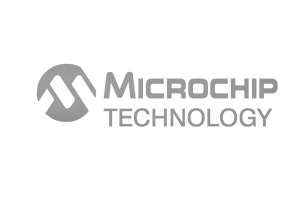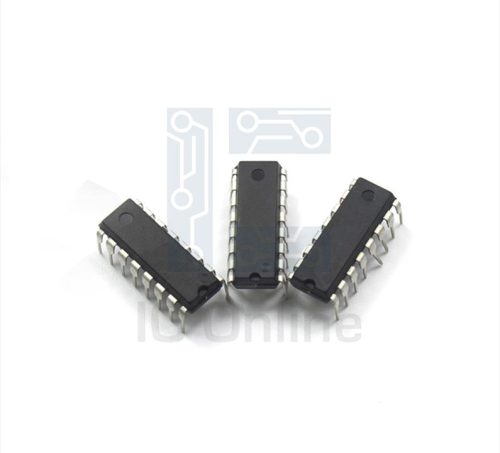JANHCB2N5415-Transistor-Die Overview
The JANHCB2N5415-Transistor-Die is a high-performance bipolar junction transistor (BJT) die tailored for industrial and precision electronics applications. Designed for robust switching and amplification functions, this transistor die offers reliable operation under demanding electrical conditions. Its silicon-based construction supports efficient current handling and stable gain characteristics, making it suitable for integration in custom semiconductor assemblies. Engineered with precision manufacturing techniques, the die ensures consistent electrical parameters and enhanced thermal performance. Available through IC Manufacturer, this transistor die is ideal for engineers and sourcing specialists seeking a dependable component for power and signal control circuits.
JANHCB2N5415-Transistor-Die Key Features
- High current handling capability: Supports collector currents up to 6A, enabling effective power amplification and load driving without compromising device integrity.
- Robust voltage rating: Collector-Emitter voltage of 60V ensures operation in medium voltage switching and amplification applications with safety margins.
- Stable gain performance: DC current gain (hFE) ranging between 40 to 160 provides consistent amplification factors across typical operating conditions.
- Low saturation voltage: Minimizes power losses during switching, improving overall circuit efficiency and thermal management.
- Silicon die construction: Guarantees compatibility with standard semiconductor packaging and integration into custom module designs.
- Reliable thermal characteristics: Ensures stable operation under elevated junction temperatures, supporting durability in industrial environments.
- Optimized for switching and amplification: Balances speed and power handling to meet diverse application demands.
JANHCB2N5415-Transistor-Die Technical Specifications
| Parameter | Value | Unit |
|---|---|---|
| Collector-Emitter Voltage (Vceo) | 60 | V |
| Collector Current (Ic) | 6 | A |
| DC Current Gain (hFE) | 40 to 160 | ?? |
| Collector-Base Voltage (Vcbo) | 60 | V |
| Emitter-Base Voltage (Vebo) | 5 | V |
| Power Dissipation (Pd) | 40 | W (at specified packaging) |
| Transition Frequency (ft) | 30 | MHz |
| Package Type | Die (unpackaged) | ?? |
JANHCB2N5415-Transistor-Die Advantages vs Typical Alternatives
This transistor die provides superior current capacity and voltage tolerance compared to many standard BJT dies, enabling more efficient power management in demanding industrial circuits. Its wide gain range and low saturation voltage reduce signal distortion and power loss, respectively. The bare die format allows custom packaging and integration, offering flexibility that prepackaged transistors cannot match. These characteristics make it a reliable and adaptable choice for engineers prioritizing performance, precision, and thermal resilience in transistor applications.
🔥 Best-Selling Products
Typical Applications
- Power amplification stages in industrial control systems where robust current handling and voltage resistance are critical for stable operation under varying loads.
- Switching elements in motor drive circuits requiring efficient on/off control with minimal energy dissipation.
- Signal amplification in audio and instrumentation devices, leveraging the device??s stable current gain for fidelity and precision.
- Custom semiconductor module assembly, where the unpackaged die format permits tailored integration into specialized hardware solutions.
JANHCB2N5415-Transistor-Die Brand Info
The JANHCB2N5415-Transistor-Die is produced by a reputable semiconductor manufacturer specializing in industrial-grade discrete components. This product represents a core offering in their portfolio of transistor dies, designed to meet rigorous performance benchmarks for power and signal processing applications. Their manufacturing process emphasizes quality control and consistency, ensuring each die meets exacting specifications. The brand is recognized for delivering reliable components that support a wide range of electronic design requirements, from prototyping to high-volume production.
FAQ
What is the maximum collector current rating for this transistor die?
The maximum collector current rating is 6 amperes, allowing the transistor die to handle substantial load currents typical in power amplification and switching applications.
🌟 Featured Products
-

“Buy MAX9312ECJ+ Precision Voltage Comparator in DIP Package for Reliable Performance”
-

QCC-711-1-MQFN48C-TR-03-1 Bluetooth Audio SoC with MQFN48C Package
-

0339-671-TLM-E Model – High-Performance TLM-E Package for Enhanced Functionality
-

1-1415898-4 Connector Housing, Electrical Wire-to-Board, Receptacle, Packaged
Can this transistor die be used for high-frequency applications?
With a transition frequency (ft) of approximately 30 MHz, this transistor die is suitable for moderate frequency applications, including audio and some RF amplification, but may not be optimal for very high-frequency circuits.
What voltage limits should be observed when using this transistor die?
The device can safely operate with a collector-emitter voltage up to 60 volts, a collector-base voltage also up to 60 volts, and an emitter-base voltage up to 5 volts, ensuring reliable performance within these boundaries.
📩 Contact Us
Is the transistor die ready for direct PCB mounting?
As a bare die, it requires additional packaging or integration into a module before PCB mounting. This allows for customized assembly but necessitates appropriate handling and encapsulation.
What are the benefits of using this transistor die over a packaged transistor?
Using the bare die enables customized packaging and integration into specialized semiconductor modules, offering improved thermal management and design flexibility compared to standard packaged transistors.







